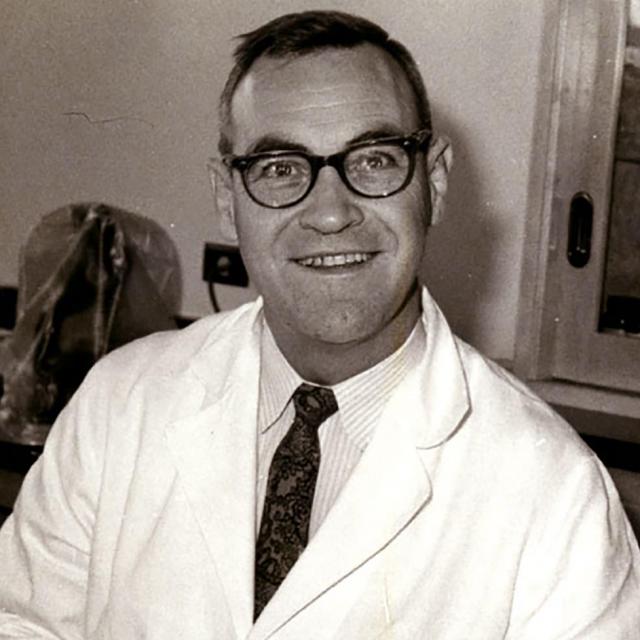
Chancellor Vernon Cheadle (37/50)
CCS was honored to showcase 50 individuals and activities during our 50th Anniversary in 2017-2018 to share our rich history. Take a look at the amazing people responsible for making our unconventional College possible!
In 1965, UC Santa Barbara Chancellor Vernon Cheadle (1910-1995) had a vision to change the landscape of UCSB. There would be three new experimental colleges; each would offer an educational experience unique to the seaside campus. He tasked Marvin Mudrick, a Professor of English, to design one of these colleges. Professor Mudrick was ready for the challenge and jumped at a chance to design what is now known as the College of Creative Studies (CCS). CCS was the first of the three colleges to get approved, and soon thereafter budget cuts halted the expansion of the other two colleges. After two years of planning, CCS opened its doors in fall 1967.
Before the launch and throughout the early years of CCS, Chancellor Cheadle and Mudrick worked very closely to shape the new College and how it would integrate into the campus. “My father met with Marvin all the time,” said Dr. William Cheadle, son of Chancellor Cheadle and a surgeon at the University of Louisville. Dr. Cheadle went on to say, “My father believed in academic excellence, and he devoted his time at UCSB to building up the academics at the University.”
Increasing the quality of the faculty was at the heart of Chancellor Cheadle’s approach to improving the academics of UCSB. “Faculty recruitment was key,” said Dr. Cheadle. “He felt that to raise the bar, you have to recruit the best faculty.” To him, universities became great because of investment in faculty, and he believed this from the moment he arrived at UCSB. In his 1962 inaugural address, Chancellor Cheadle stated, “The main take of a chief campus officer is quite clear, no doubt, if one examines with care the way in which the great universities were created in this country [...] all of them concentrated upon one task: the building of a great faculty. This is because they know that, more than anything else, a great faculty is the core of a great university.” CCS was also vital to this effort. “He saw CCS as a way to get really smart kids, who would normally attend Harvard or Yale, to attend UCSB,” explained Dr. Cheadle. CCS was, and still is, a place where students who are particularly driven in a certain field are empowered to thrive. Chancellor Cheadle saw these two efforts as complementary. Said Dr. Cheadle: “This effort enhanced not only the research of the university but also the undergraduate education because the top students are drawn to top faculty.”
The main take of a chief campus officer is quite clear, no doubt, if one examines with care the way in which the great universities were created in this country [...] all of them concentrated upon one task: the building of a great faculty. This is because they know that, more than anything else, a great faculty is the core of a great university.
From an early age, Chancellor Cheadle believed in academic excellence. He earned a Bachelor of Arts Degree with Honors in Botany, magna cum laude, from Miami University in 1932. After receiving an MA and Ph.D. from Harvard University in 1934 and 1936, respectively, he joined the University of Rhode Island (URI) faculty, where he quickly earned international recognition as a botanist and rose to the rank of full professor in just five years. It was at URI that Chancellor Cheadle met his wife Mary, and they were married in 1939. After 16 years at URI, he began a 25-year run at the University of California when he accepted the Chair of Botany at UC Davis in 1952. Ten years later, he was appointed Chancellor at UCSB, where he led the campus for 15 years until he reached the mandatory (at the time) retirement age of 67.
Chancellor Cheadle is recognized by many as being crucial in the development of the campus from a small university to one of the top public universities in the nation. According to his eulogy, “During his 15 years as Chancellor, there was unprecedented growth in faculty quality, physical structures and overall beauty, student enrollment, graduate programs, endowments, and community involvement.” It is hard to imagine CCS without the vision and ingenuity of Chancellor Cheadle. The College of Creative Studies is just one of the many great legacies the Chancellor left at this University.